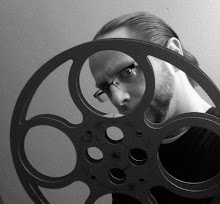The films of director Terry Gilliam often tend to be a tough
nut to crack. From 12 MONKEYS (1995) to THE IMAGINARIUM OF DOCTOR PARNASSUS
(2009), a person’s enjoyment of Gilliam’s work depends upon just how much work
one is willing to put into it. Gilliam’s newest work, THE ZERO THEOREM, is no
different.
In the future, Qohen (Christoph Waltz) is a genius computer
programmer who is searching for his life’s meaning while working for a large
corporate tech company, led by Management (Matt Damon). After a chance meeting
with Management, Qohen is assigned a new project; to solve The Zero Theorem, a
computer formula which holds the meaning of life. Qohen is assisted by his
supervisor (David Thewlis), a prostitute (Melanie Thierry), and Bob (Lucas
Hedges), the son of Management.
THE ZERO THEOREM is a film full of big ideas, mostly focused
on finding the meaning of life. The entire film, from start to finish, is all a
big metaphor for existence and technology. Figuring that out takes some effort,
because the world that this story takes place in is a very bizarre one. People
act and dress funny for no apparent reason, and the film often feels like a
parody or Saturday-morning cartoon.
Once you cut through all of the wild set-dressing and try to
focus on the story and whatever messaging director Terry Gilliam is supposedly
trying to get across, there’s just flat-out disappointment to be found as the
message, as clear as it is, doesn’t mean very much. It’s not a question of
finding out the end and saying “that’s it?” as much as saying “so what?”.
While Gilliam is creating a narrative which goes nowhere, he’s
creating a visual masterpiece with his sets and characters. The futuristic
world is full of color and is an assault on the eyeballs. Characters are
explored fairly well enough, with Qohen getting the most attention. The technology
they use is greatly realized, and feels like the next step in our
operating-system evolution.
Acting is very good despite everything and everybody being
so weird. Christoph Waltz, with his shaved head, funny clothing, and
social-awkwardness, feels like he’s channeling Christopher Lloyd’s Uncle Fester
(and often looks just like him), but in this wacked-out world it works. Waltz
goes through every range of emotion and is simply outstanding. Melanie Thierry
is fantastic to watch, and the show is nearly stolen by young-teen Lucas
Hedges. David Thewlis is also great, and the rest of the cast; Matt Damon,
Tilda Swinton, Peter Stormare, Ben Whishaw…are treated like unfortunate cameos.
As off-the-wall as the film is, it goes for an ending that’s
even more out-there and requires a fair amount of heavy-lifting to figure out
exactly where things wrap up. There is a lot to admire in THE ZERO THEOREM in
ideas, acting, and visual mastery, but even if you’re willing to put in the
work to figure things out, the payoff is puny. Approach this one with extreme
caution.
BOTTOM LINE: Rent it














